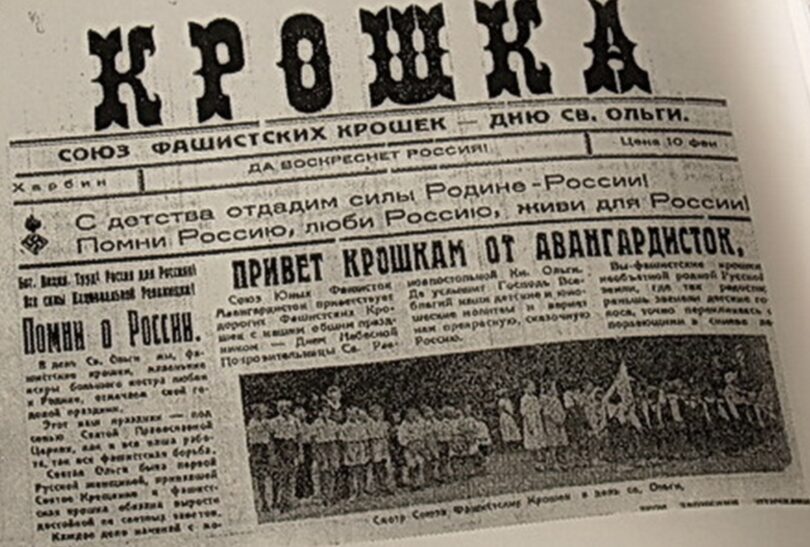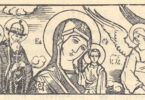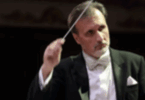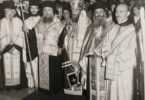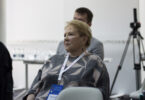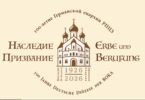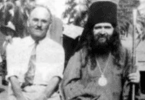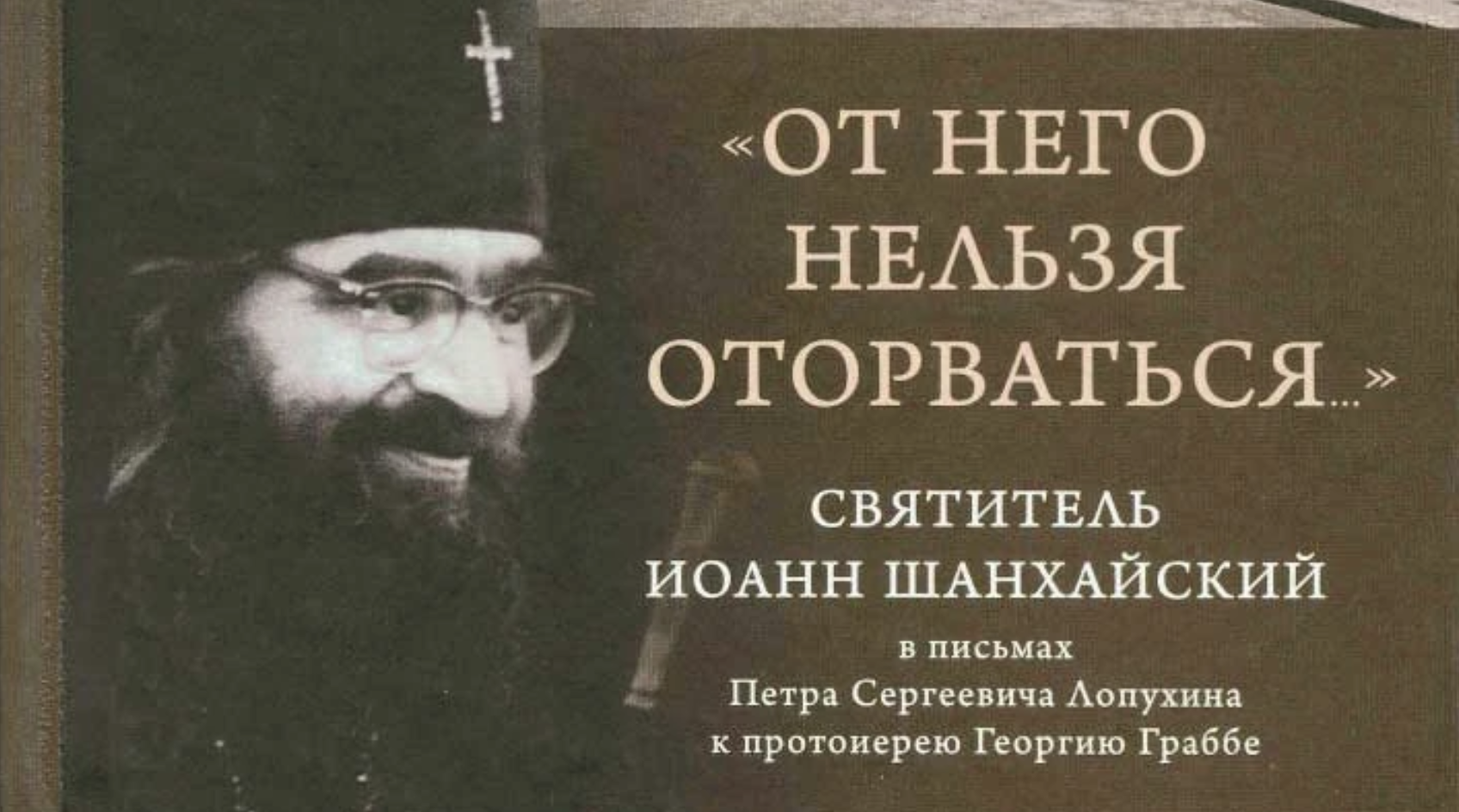From the Editors
The All-Russian Fascist Party (ARFP) was active in Harbin, Manchuria during the 1930s. Much of the movement’s propaganda and ideological literature was so similar in style, structure and content to that of the Bolshevik Party in Russia as to render the two almost indistinguishable, save for the substitution of a few key terms (e.g., “Communists” for “Bourgeoisie”).
But the ARFP exceeded the Bolsheviks in one conspicuous way. While the USSR did not establish politically oriented children’s brigades until the 1960s, the Fascists of Harbin devoted much time and ink to such projects during the 30s. The Fascist literati appropriated and politicized Russian folk tales and staged original plays in order to inculcate the early and fervent political engagement of the “Union of Tiny Fascists”, as the troops were called. The surviving literature is the most interesting artifact of the activity of the All-Russian Fascist Party.
The assertion that Bolshevism/Communism and Fascism represent two sides of the same coin has by now become a commonplace. Agreeing with Leo Spitzer, who was convinced that “the history of ideas and important semantic concepts in the cultural field can be described by analyzing their linguistic expression”[1]Quoted from: [Viacheslav V. Ivanov] “Predislovie redaktora angliiskogo izdaniia” [“Editor’s Foreword to the English Edition”]. Ronen, O. Serebrianyi vek kak umysel i vymysel [The Silver Age … Continue reading, it is interesting to show that the ideological constructions, narrative features, signs and symbols of the Russian fascists of the 1930s represented a kind of eclecticism, something halfway between the ideology of Italian and German fascism, on the one hand, Russian pre-revolutionary ideology, on the other, and communist ideology, on the third. In this case, the latter played a decisive role.
The observation made by John Stephan in his fundamental work The Russian Fascists: Tragedy and Face in Exile 1925–1945 (“The full scope of the subject can be glimpsed only by piecing together fragmentary accounts in multiple languages from repositories scattered throughout the world”[2]. J. J. Stephan. The Russian Fascists: Tragedy and Farce in Exile, 1925–1945. NY: Harper Row, 1978. p. XIX) has thus far not lost its relevance. Below, we shall examine one of the segments of the history of 1930s Russian fascism, concerning how specifically it expressed itself. However, at the beginning of the article, it is appropriate to speak about the algorithm of the activity of the All-Russian Fascist Party (hereinafter ARFP) in Harbin, which can be defined as the borrowing and adaptation of certain phenomena from culture, political movements, rhetoric, etc., dating back mainly to the Soviet Union and pre-revolutionary Russia. Mythologization as an integral part of Soviet culture (cf., for example, the construction of the myth of collectivization as a variant of the manifestation of Russian sobornostʹ) was mirrored in the culture of Russian Fascism.
Researchers have noted attempts by the fascist party in Harbin[3]Subsequently, the general name “All-Russian Fascist Party” was used by organizations of Russian fascists in the Far East headed by K. V. Rodzaevskii, the Russian Fascist Party (1931–1934), the … Continue reading to structure their organization and arrange its activities by analogy with Soviet ones, “in opposition” to them: it was in this way, “in opposition” to the communists’ May Day, that the opening of the Higher Party School was set up and May Day meetings were organized (ARFP); its supreme body, initially called the Supreme Soviet (“Council”), was later renamed the Central Committee; the “Fascist ABC” (1834) by G. Taradanov, co-authored by V. V. Kibardin. was the antithesis of N. Bukharin’s “Communist ABC” (1921); Russian fascists called each other “comrades-in-arms” (by analogy with and in contrast to Soviet “comrades”).
ARFP ideologues made no secret of borrowing rhetoric from their worst enemies. For instance, a certain “M. I.” urged in Natsiia [The Nation], the press organ of the ARFP: “Learn from the enemy. Lenin on the composition and tasks of revolutionary organization. Lenin on revolutionary practice when the authorities are facing difficulties. Conclusion: it suffices to replace the word ‘bourgeoisie’ with the word ‘communism’ and the words ‘bourgeois system’ with the words ‘communist system’.”[4]M. I. “Biblioteka russkogo natsista” [“Library of a Russian Nazi”]. Natsiia. 4/1934. p. 24.The slogan in Natsiia magazine “Russians! We ourselves are the smiths of our national freedom!” [5]Natsiia. 8–9/1934. was read as a borrowing from F. Shkulev’s song “Kuznetsy” [“The Smiths”], written for the 1905 Revolution: “We are smiths, and our spirit is young…”.
The following conclusion drawn by Irina Sandomirskaia is quite applicable to this attempt to create one’s own narrative using fragments and allusions of someone else’s: “This continuity is all the more interesting because it is not along the lines of rational political programs – here, on the contrary, we have complete antagonism. It runs along the line of myth and the corresponding rules of word usage” [6]I. Sandomirskaia. “Kniga o rodine: Opyt analiza diskursivnykh praktik” [“A Book about the Fatherland: A Study in the Analysis of Discursive Practices”], Wiener Slawistischer Almanach. Wien, … Continue reading.
But if people with the wisdom of life experience, an established system of beliefs, and an unshakable set of values, as well as having sufficient information, understood the farcical nature of Russian fascism[7]For instance, responding to an invitation to join the International Academy of Christian Sociologists, T. S. Eliot, after initially agreeing to become an associate member, later learned of the … Continue reading, there was an audience to whom the ARFP ideology could easily be presented as a romantic, self-sacrificing struggle for national and religious-moral values. This audience was children, with their unsophisticated minds, who would easily absorb any myths.
This is also relevant to Soviet upbringing, where, as Catriona Kelly rightly argues, “as early as the early 1930s […] the vast majority of Soviet children were influenced in one way or another by patriotic education,” in which state policies aimed at socializing children through education, involvement in political organizations (such as the Pioneer movement), and propaganda (which included literature for children, school textbooks and visual media such as posters) played a huge role”[8]C. Kelly. “«Malenʹkie grazhdane bolʹshoi strany»: internatsionalizm, deti i sovetskaia propaganda” [“‘Small Citizens of a Large Country: Internationalism, Children, and Soviet … Continue reading.
However, organizations for the very young (“October” organizations) were created in the Soviet Union only in the 1960s, so here the Russian fascists, who usually picked up and reinterpreted everything that was done in the socialist homeland, were far ahead of the USSR: the “Union of Tiny Fascists” was founded in 1934 in Harbin as an organization for children from three to ten years of age[9]In addition to this organization for the very youngest – from 3 to 10 years old – there was the Vanguard Union of Young Fascists, the Vanguard Union of Young Fascists, and the Union of Fascist … Continue reading. This article focuses on the construction of some myths for this specific audience.
The “tiny fascists” had their own march, their own newspaper (Kroshka), their own commandments. They had special classes and a special kind of literature. “The indefatigable Fascist writer and comrade-in-arms Patd-Pomarnatskaia”, as this active author of plays for children was called by the newspaper Nash putʹ [Our Way] and the magazine Natsiia, flooded the latter with her works, the protagonists of which were fascist babies.
N. K. Pats-Pomarnatskaia’s one-act play Imeniny Kroshki Natashi [Tiny Natasha’s Name Day] features five characters: Tiny Natasha, Grandmother, Tiny 1, Tiny 2, and Tiny Boy.[10]It is difficult to get away from the idea that the very word “tiny” [kroshka; lit. ‘crumb’, but with the secondary meaning of a ‘small child’ –transl.] was picked up by Russian fascists … Continue reading. However, according to a comment, the play can easily be transformed into a mass event: “An unbounded number of children may be introduced at will”[11]N. K. Pats-Pomarnatskaia. “Imeniny kroshki Natashi”. Natsiia. 1/1936, p. 53. Subsequent quotes from the play are referenced with page numbers in parentheses.. The play is fundamentally didactic in nature. Near the very beginning, ‘Tiny 1’ asks the question: “Grandma, what are we going to talk about?”, and then the name-day turns into a lesson on fascism, in which the other children happily join in. The question is answered, however, not by the grandmother, but by Tiny 2: “Let’s talk about our beloved fascism?” Her proposal is met with delight: “Good. Bravo, bravo! What fun! (clapping hands)” (53).
The children begin about why their units (termed either a “dozen” or a “den”) of the “Union of Tiny Fascists” have the names they do. It is these explanations, saturated with the rhetoric of national identity, that are most entertaining. For instance, the name of Turgenev’s heroine Liza Kalitina was adopted by the “tiny fascists” because this “wonderful Russian girl, very kind, loving God, Russia and all people more than anything else,” (53) had gone away to pray for these things in a monastery. The symbolic meaning of the title of another “den”, “The Tale of the Sleeping Tsarevna and the Seven Bogatyrs”, is revealed to Pats-Pomarnatskaia’s companion: “The Evil Stepmother and Baba Yaga are the Bolshevik communists. The Tsarevna is our Motherland, Russia. The Tsarevich is our bright leader, and we fascists will save Russia” (54), etc. Symbolic meaning is also given to the black uniforms of the Russian fascists, which represent nothing other than “mourning for our Motherland, which is suffering so greatly” (54). The attitude to fairy tales seems to be the only point in which the ARFP-inspired children’s literature diverges from the attitudes of the Soviet children’s literature of these years[12]In the USSR, beginning in the 1920s, an attack was mounted on the “magical” fairy tale as the “most harmful of books”. The fairy tale was equated with anti-state activity: the head of … Continue reading.
The story about the fascists, as well as the whole rhetoric of the ARFP in the conversation between the children and their grandmother, focuses on their opposition to the communists. To make the subject matter of the actors’ conversation more understandable, an emphasis is placed on the tragic fates of children in the USSR (just as dramatic and tragic situations afflicting Soviet children always occurred abroad): “[…] the best people are killed by [the Communists], and they take children away from their parents and put them in orphanages [sic!], but it’s very bad there, the children run away and become homeless, criminals, and the Bolsheviks shoot them” (54).
Just as Bolshevik rhetoric is constructed upon the special role of the individual, the children’s play explains who Konstantin Vladimirovich Rodzaevskii is, while emphasizing, as in the Soviet version, that he lives here, “among us” (cf. Maiakovskii’s poem “Vladimir Ilich Lenin”: “He is like you / and me, / quite the same”; “He is together, / teaching in the blacksmith’s forge…”).
The children’s optimistic exclamation of “Ah, how good!” brings together the most important concepts for the ARFP into a triad: “Thank God we are tiny fascists! Glory to Russia!” – Orthodoxy, fascism, and patriotism.
At the very end of the play, there is also space for the grandmother, who is asked whether she, too, is one of the “Tiny Fascists,” to which she replies with emotion and pride: “You naughty girl! You don’t want to offend me, do you? Yes, as it happens, old and little are almost the same. I’m happy to be tiny, as long as I’m a tiny fascist.” (55)
Didacticism is an ontological quality of children’s literature, but in this case, it is accompanied by political bias, intrusiveness, and a lack of any plot and imagery. Attempts to incorporate folk and literary traditions into the narrative turn out to be sentimental and one-dimensional symbolism. The play does not stand up to comparisons with Soviet children’s literature from the 1930s; rather, we can speak of a certain coincidence of intentions with the children’s literature created in the Soviet Union a decade earlier, or rather, with the framework that educational officials tried to define for children’s literature. The overarching task of the new Soviet literature for children was proclaimed at that time to be neither imagery nor plot: “[…] it would be an error to think that ‘children’s fiction’ is necessarily fiction or poetry, which has been lowered from Olympic heights to the level of the child […],” wrote Н. F. Chuzhak, a Glavlit member.[13]The Main Directorate for Literature and Publishing (Glavlit) was created within the system of the People’s Commissariat of Education by a decree of the Council of People’s Commissars dated June … Continue reading, in some theses for a talk on “Children’s Literature”. Speaking about the “dialectics of children’s books”, he put forward the task of filling out the concept of “art” in a different way than before, and emphasized its new, truly Marxist meaning: “It is time for Marxists to give up the notion that art is some mysterious ‘refraction of reality’ through the ‘prism of the beautiful’, perceived by the viewer or reader through so-called ‘aesthetic pleasure’.”[14]N. Chuzhak. “Detskaia literatura: Tezisy. Dialektika khudozhestvennoi detskoi knizhki.” [“Children’s Literature. Theses. Dialetics of Children’s Fiction Books”] (RGALI, fonds 340, Inv. I, … Continue reading.
This and Chuzhak’s other theses resonate with Pats-Pomarnatskaia’s play, which can easily be seen as an embodiment of the basic principles named by the Chuzhak in the chapter “Our Attitude”, and, as can be understood from the dramaturgical practice of the ARFP’s exemplary ally, fully shared by her: “А. Education in struggle (class actualism, will for reorganization). B. Sober consideration of reality [15]This corresponds, for example, to the touching emphasis in the play on the fascists’ place of residence: “[…] we live in the foreign, hospitable country of Manchu-Di-Go” (55).. […] Participation in modernity […] modern life (political and social)”[16]Chuzhak N. Detskaia literatura: Tezisy. (RGALI, fonds 340, Inv. I, Item 10, f. 1)..
The rhetoric of inevitable confrontation, the struggle to destroy the enemy, the propaganda of one’s own ideas against the backdrop of a lack of information about the ideas of one’s opponents: all these and other similar characteristics were equally taken up by both Soviet children’s literature and the works of Russian fascists. For both, it was important to have a realistic children’s book (what was meant by “realism” is another matter) that would convey the main ideological concepts to the children’s audience in a simplified and child-friendly form: “We need such forms of children’s books as would be the best agents for tasks, i.e.: they would give a realistic idea of life, nurture the will to build, to act, and, would be reliable advocates for collectivism”[17]Ibid, f. 8..
But here too, as in the “adult” narrative, the Russian fascists were not consistent. Whereas, for N. F. Chuzhak, the main pathos of the literary struggle (after the speech of N. K. Krupskaia, chairman of the scientific and methodological section of the State Scientific Council or GUSar of the People’s Commissariat of Education, as well as its supporters, e.g., A. Barto, B. Bukhshtab, etc.) was directed against the fairy tale with its “magical” bias that “perverted reality”,[18]N. Chuzhak. “Detskaia literatura v 1925 godu” [“Literature in 1925”] (RGALI, fonds 340, Inv. I, Item 36, f. 65)., Pats-Pomarnatskaia’s next play Tri Yolki [Three Christmas Trees] resorts to the help of a fairy, who, personifying Fate, brings the protagonists, Tania and Vania, to a Christmas tree with the “Tiny Fascists” and enthusiastically thanks the fairy Fate: “Oh how much joy, goodness, Fairy, you have brought us!”.[19]N. K. Pats-Pomarnatskaia. Tri elki. Natsiia 12/1935, p. 60.
As we know, “instructive, ideologically saturated, or, as we tend to say, ‘idea’ literature is easily translated into the language of anti-artistic schemes and concepts”[20]M. Enshtein. Postmodern v russkoi literature [Postmodernism in Russian Literature]. Moscow, 2005. p. 168.. This statement by Enshtein, a theorist of postmodernism, is also applicable to the ARFP members’ children’s plays, written in squalid language, with anachronistic exclamations of “Oh!” and “Ah!”, plays devoid of artistry. Addressed to children, these works constitute a segment of Russian fascism, the essence of which was defined as tragedy and farce by the first scholar to study it[21]The term “farce” was first applied to Russian fascism by: Stephan, op. cit.. The children’s drama analysed here is a part of its farcical nature.
References
| ↵1 | Quoted from: [Viacheslav V. Ivanov] “Predislovie redaktora angliiskogo izdaniia” [“Editor’s Foreword to the English Edition”]. Ronen, O. Serebrianyi vek kak umysel i vymysel [The Silver Age as Intent and Fiction]. Moscow, 2000. p. 11. |
|---|---|
| ↵2 | . J. J. Stephan. The Russian Fascists: Tragedy and Farce in Exile, 1925–1945. NY: Harper Row, 1978. p. XIX |
| ↵3 | Subsequently, the general name “All-Russian Fascist Party” was used by organizations of Russian fascists in the Far East headed by K. V. Rodzaevskii, the Russian Fascist Party (1931–1934), the All-Russian Fascist Party (1934–1938) and Russian Fascist Union (1938–1943). |
| ↵4 | M. I. “Biblioteka russkogo natsista” [“Library of a Russian Nazi”]. Natsiia. 4/1934. p. 24. |
| ↵5 | Natsiia. 8–9/1934. |
| ↵6 | I. Sandomirskaia. “Kniga o rodine: Opyt analiza diskursivnykh praktik” [“A Book about the Fatherland: A Study in the Analysis of Discursive Practices”], Wiener Slawistischer Almanach. Wien, 2001. Sd. 50. p. 22 (yanko.lib.ru/books/cultur/sadomirskaya-rodina.htm). |
| ↵7 | For instance, responding to an invitation to join the International Academy of Christian Sociologists, T. S. Eliot, after initially agreeing to become an associate member, later learned of the desire of the founder of the Academy, S. N. Bolshakov, to unite not only Christian denominations, but also the church in general, with the fascist party in Harbin, and wrote him a rather sharp letter: “I must say, in reply to a previous letter of yours […], that I am very skeptical of the possibility of Catholic association with any fascist movement that is likely to prosper here. I am indeed doubtful whether the principles of the Church and these of fascism are not wholly opposed” (Bodleian Library. MSS Russian. 266.44, Dep. В.115-35. Sergei Bolshakov, letter to T. S. Eliot dated March 3, 1934). |
| ↵8 | C. Kelly. “«Malenʹkie grazhdane bolʹshoi strany»: internatsionalizm, deti i sovetskaia propaganda” [“‘Small Citizens of a Large Country: Internationalism, Children, and Soviet Propaganda”]. Novoe literaturnoe obozrenie [New Literature Review] 60, 2003. See also: C. Kelly. Children’s World: Growing Up in Russia, 1890–1991. New Haven and London: Yale University Press, 2007. |
| ↵9 | In addition to this organization for the very youngest – from 3 to 10 years old – there was the Vanguard Union of Young Fascists, the Vanguard Union of Young Fascists, and the Union of Fascist Youth under the ARFP. On these, see, for example: A. K. Okorokov. Fashizm i russkaia emigratsiia [Fascism and the Russian Emigration]. Moscow, 2002. |
| ↵10 | It is difficult to get away from the idea that the very word “tiny” [kroshka; lit. ‘crumb’, but with the secondary meaning of a ‘small child’ –transl.] was picked up by Russian fascists from V. V. Mayakovskii’s poem “What is good and what is bad” (1925), with its well-known opening: “The tiny son [kroshka-syn] came to his father […]”. |
| ↵11 | N. K. Pats-Pomarnatskaia. “Imeniny kroshki Natashi”. Natsiia. 1/1936, p. 53. Subsequent quotes from the play are referenced with page numbers in parentheses. |
| ↵12 | In the USSR, beginning in the 1920s, an attack was mounted on the “magical” fairy tale as the “most harmful of books”. The fairy tale was equated with anti-state activity: the head of Glavlit, P. I. Polianskii, wrote in his “Review of Children’s Literature Published in Moscow and Leningrad in Early 1927”: “The magical bias of the publishing house Raduga, with its perversion of reality, is of an anti-Soviet nature in educational terms […]” (RGALI, fonds 1855, Inv. I, Item 4, f. 7 ). |
| ↵13 | The Main Directorate for Literature and Publishing (Glavlit) was created within the system of the People’s Commissariat of Education by a decree of the Council of People’s Commissars dated June 6, 1922 and exercised control over all publishing activities in the country. |
| ↵14 | N. Chuzhak. “Detskaia literatura: Tezisy. Dialektika khudozhestvennoi detskoi knizhki.” [“Children’s Literature. Theses. Dialetics of Children’s Fiction Books”] (RGALI, fonds 340, Inv. I, Item 10. f. 3). |
| ↵15 | This corresponds, for example, to the touching emphasis in the play on the fascists’ place of residence: “[…] we live in the foreign, hospitable country of Manchu-Di-Go” (55). |
| ↵16 | Chuzhak N. Detskaia literatura: Tezisy. (RGALI, fonds 340, Inv. I, Item 10, f. 1). |
| ↵17 | Ibid, f. 8. |
| ↵18 | N. Chuzhak. “Detskaia literatura v 1925 godu” [“Literature in 1925”] (RGALI, fonds 340, Inv. I, Item 36, f. 65). |
| ↵19 | N. K. Pats-Pomarnatskaia. Tri elki. Natsiia 12/1935, p. 60. |
| ↵20 | M. Enshtein. Postmodern v russkoi literature [Postmodernism in Russian Literature]. Moscow, 2005. p. 168. |
| ↵21 | The term “farce” was first applied to Russian fascism by: Stephan, op. cit. |

